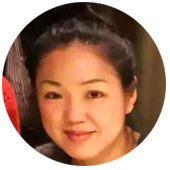The Battle of Okinawa claimed more than 200,000 lives, including many civilians, and was one of the bloodiest confrontations in the Pacific theater of war.
This year was the 75th anniversary of the end of the battle. To commemorate the date, an elementary school located on a US military base in Okinawa put together a video featuring current and former students from around the world calling for peace.
Teaching children on US base the history of Okinawa
The Kinser Elementary School, located on the US Marine Corps’ Camp Kinzer, started teaching its students about the Battle of Okinawa five years ago. Shimojo Ayano, an Okinawa native, teaches Japanese culture at the school. She decided to add the Battle of Okinawa to her course after realizing that very few of her students were aware of what was a crucial event in the history of the place they were calling home.
Shimojo speaks to her students about her own family’s experiences during the war. Her father and grandmother hid in a cave to escape the fighting. They survived, but many of their neighbors who took refuge in nearby caves were not so lucky. Nearly half of the district’s residents were killed in the battle.
“My family luckily survived,” Shimojo tells her students. “But if my family didn’t survive, I wouldn’t be standing here.”
Shimojo tries to appeal to her students’ sense of empathy, encouraging them to put themselves in the shoes of the innocent civilians caught up in the fighting.

Vandalism inspires change
Three years ago, she told her class about an act of vandalism at Chibichirigama, a cave that serves as a memorial site for the civilian victims of a mass suicide during the Battle of Okinawa. The vandals destroyed origami paper cranes left by visitors, boards with messages of peace, a statue, and items that belonged to the victims. When the class heard about it, they felt compelled to act.
The students took to social media, asking for help making new paper cranes. And people from around the world answered the call. Two months after the incident, Shimojo’s class donated 14,000 cranes to the site.
The enthusiasm of her students convinced Shimojo to expand the scope of their peace studies. The class started visiting other memorials around Okinawa and donating paper cranes. Now, her students speak directly to the people of Okinawa, listening to their experiences of the war.
Shimojo believes learning about the war is important, regardless of nationality. Her hope is to help the children learn about what happened here before they arrived.
“The important part is to listen and try to understand the other side,” she says.

A new way of remembrance amid coronavirus outbreak
This year, as the coronavirus pandemic swept across the world, Kinser Elementary School took all classes online. The children would be unable to make their customary visit to a war memorial on June 23.
Instead, Shimojo devised a way for her students to pay their respects. She organized video sessions, and got former students living around the world to join in. More than 100 people, including their family and Japanese friends, ended up taking part, sharing messages of peace and showing the cranes they had made.
Reunited with a former student
One of the former students who took part was Anna Miller, who currently lives in Maryland in the United States.
Anna has a Japanese mother and an American father. She first learned of the Battle of Okinawa in Shimojo’s class, which she says challenged her to seriously think about her roots and family history.
She says the class inspired her to visit the Chiran Peace Museum with her family. The museum is dedicated to wartime suicide bombers and is located in a town that hosted a military base from which many of these bombers took off. Anna learned that some of them were as young as she is now.
“It made me feel really grateful that I'm living in a time where there's not a world war going on,” she said. “It made me realize that I am kind of privileged and I need to use my privilege to speak out against what's wrong.”

Shimojo says talking to Anna gave her a better understanding of the value of her class and teaching her students about the battle.
“If we don't teach the past, we cannot have a better understanding of the present society and move forward to a bright future,” she says. "We need to keep on sending hope all over the world.”
The most encouraging part, she says, was learning that so many of her former students have not forgotten what they learned in Okinawa. Shimojo says she is now more committed than ever to teaching the history of the battle, and the need for peace it so starkly lay bare.

